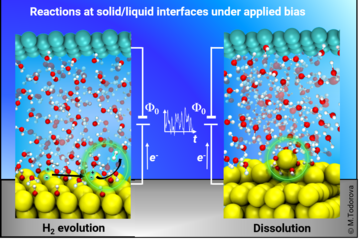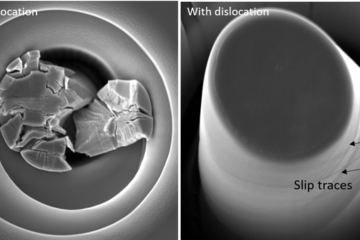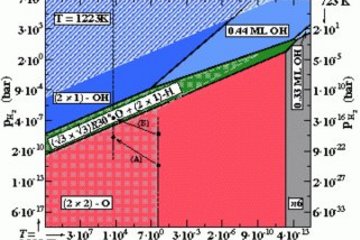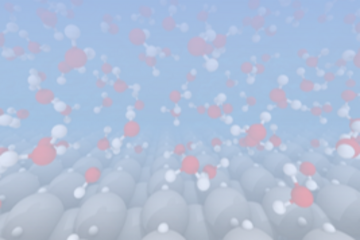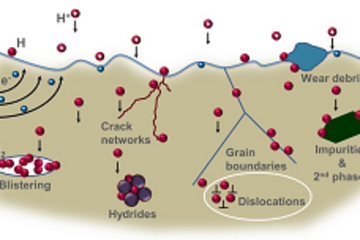All genres
1.
Journal Article
Puppet Strings of Hydrogen Plasma Reduction of Iron Ores: The Impact of Process Parameters on Plasma Properties and Reduction Kinetics. Metallurgical and Materials Transactions B 56 (5), pp. 5232 - 5245 (2025)
2.
Journal Article
In Situ Observation of Sustainable Hematite-Magnetite-Wustite-Iron Hydrogen Plasma Reduction. Metallurgical and Materials Transactions B 56 (4), pp. 3938 - 3949 (2025)
3.
Journal Article
A novel concept for self-healing metallic structural materials: Internal soldering of damage using low melting eutectics. Materials & Design 252, 113821 (2025)
4.
Journal Article
Metallurgical Synthesis Methods for Mg-Al-Ca Scientific Model Materials. Metallurgical and Materials Transactions A 56 (2), pp. 546 - 556 (2025)
5.
Journal Article
Coarsening mechanism of M2B-borides and their effect on the mechanical properties of high modulus steels. Materials & Design 247, 113411 (2024)
6.
Journal Article
Surface hardening of high modulus steels through carburizing and nitriding: First insights into microstructure property relationships. Surface and Coatings Technology 494 (Part 1), 131354 (2024)
7.
Journal Article
Mechanisms and elemental partitioning during simultaneous dephosphorization and reduction of Fe-O-P melts by hydrogen plasma. Acta Materialia 277, 120221 (2024)
8.
Journal Article
Circular Steel for Fast Decarbonization: Thermodynamics, Kinetics, and Microstructure Behind Upcycling Scrap into High-Performance Sheet Steel. Annual Review of Materials Research 54 (1), pp. 247 - 297 (2024)
9.
Journal Article
The Optical Spectra of Hydrogen Plasma Smelting Reduction of Iron Ore: Application and Requirements. Steel Research International 95 (8), 2400028 (2024)
10.
Journal Article
Sustainable Ironmaking Toward a Future Circular Steel Economy: Exploiting a Critical Oxygen Concentration for Metallurgical Cu Removal from Scrap-Based Melts. Steel Research International 95 (5), 2300785 (2024)
11.
Journal Article
Iron ore wires as consumable electrodes for the hydrogen plasma smelting reduction in future green steel production. Sustainable Materials and Technologies 39, e00785 (2024)
12.
Journal Article
High-resolution chemical and structural characterization of the native oxide scale on a Mg-based alloy. Corrosion Science 227, 111776 (2024)
13.
Journal Article
Green steel from red mud through climate-neutral hydrogen plasma reduction. Nature 625, pp. 703 - 709 (2024)
14.
Journal Article
Local lattice distortions and chemical short-range order in MoNbTaW. Materials Research Letters 12 (5), pp. 346 - 354 (2024)
15.
Journal Article
Effect of Si on the hydrogen-based direct reduction of Fe2O3 studied by XPS of sputter-deposited thin-film model systems. Scripta Materialia 233, 115515 (2023)
16.
Journal Article
Plasticity of the C15-CaAl2 Laves phase at room temperature. Materials and Design 225, 111504 (2023)
17.
Journal Article
Effect of substrate temperature on in-situ precipitation during laser powder bed fusion of Fe–TiB2 high modulus steel. Virtual and Physical Prototyping 18 (1), e2269906 (2023)
18.
Journal Article
Fundamentals of Green Steel Production: On the Role of Gas Pressure During Hydrogen Reduction of Iron Ores. JOM-Journal of the Minerals Metals & Materials Society 75, pp. 2274 - 2286 (2023)
19.
Journal Article
Laves phases in Mg–Al–Ca alloys and their effect on mechanical properties. Materials and Design 225, 111470 (2023)
20.
Journal Article
The role of cementite on the hydrogen embrittlement mechanism in martensitic medium-carbon steels. Materials Science and Engineering A: Structural Materials Properties Microstructure and Processing 859, 144204 (2022)




